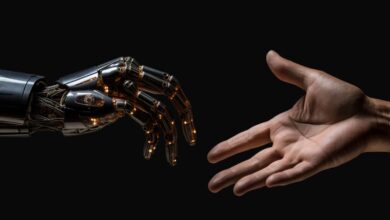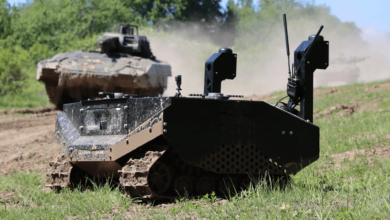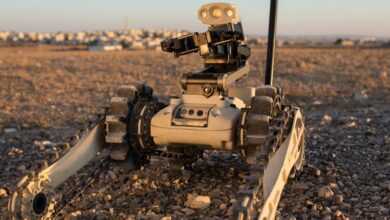Mercedes-Benz Embraces Humanoid Robots to Enhance Manufacturing

In response to the increasing challenges of staffing in the manufacturing industry, Mercedes-Benz Manufacturing in Hungary has introduced humanoid robots named Apollo, designed by Texas-based Apptronik, onto their production floors. These robots are not only tackling staffing shortages but also enhancing the efficiency and safety of the manufacturing process.
Summary: Apollo robots, at 5 feet 8 inches tall and capable of lifting 55 pounds, collaborate with human workers by performing physically demanding tasks and safely integrating into existing workspaces without the need for safety barriers. Mercedes-Benz anticipates these robots will automate repetitive tasks and enable skilled employees to focus on more complex duties, improving productivity and job satisfaction. The use of such robots in the industry raises important questions about the potential implications for human employment.
Apollo robots are touted for their physical attributes, which are analogous to those of human counterparts, enabling them to carry assembly kits and inspect parts. With the swappable battery modules, each robot can operate for about four hours, sustaining a shift’s worth of work.
The introduction of robots such as Apollo into the manufacturing realm is seen as a strategic move to bridge labor gaps. By offloading simple or hazardous tasks to robotic assistants, companies like Mercedes-Benz hope to reposition their human workforce into roles that require more intricate skills.
While Mercedes-Benz is pioneering this approach, it’s not alone; BMW has also been experimenting with similar technologies in its US factories. Both automotive giants are exploring the capabilities of these robotic systems to transform assembly line operations fundamentally.
This technological evolution leads to crucial discussions about the future of manufacturing jobs and the broader implications of an automated workforce. As companies strike a balance between robotic efficiency and human expertise, the narrative of robots in the workplace continues to evolve.
The integration of humanoid robots in manufacturing is a trend gaining momentum as companies like Mercedes-Benz Hungary embrace innovative solutions to address labor shortages and improve production efficiency. The introduction of Apollo robots—developed by Apptronik—into their production lines highlights a significant shift towards the use of advanced automation technology in the automotive industry.
Industry Overview
The automotive industry, in particular, has been at the forefront of adopting robotic technology due to its high-volume, precision-oriented manufacturing processes. Robots like Apollo are capable of performing tasks that range from simple repetitive actions to complex assembly procedures, allowing human workers to focus on areas where their skills yield greater value.
Market Forecasts
The global market for industrial robots is expected to witness substantial growth in the years ahead. Analysts predict that this market could continue to expand as industries across the board seek to modernize their production capabilities. The demand for such technology is fueled by the need to reduce labor costs, improve product quality, decrease production time, and enhance workplace safety.
Industry Issues and Challenges
The adoption of robotics raises several issues, particularly relating to the workforce. While robots can work alongside humans to improve job satisfaction and safety, there is also concern about job displacement. To mitigate this, there is an increasing emphasis on upskilling employees, allowing them to take on more complex roles that robots are not suited for.
Balancing the benefits of robotics with the costs, such as initial investment and ongoing maintenance, is another challenge manufacturers face. Not every business has the financial capability to invest in such technology, which could lead to a widening gap between large and small-scale manufacturers.
Another factor to consider is the technical reliability of robots and the need for continuous improvement in artificial intelligence and machine learning to enable these machines to handle more varied tasks and make independent decisions.
Furthermore, with the growth of robotics in manufacturing, cybersecurity becomes an essential consideration. Manufacturers must ensure that their robotic systems are secure against cyber threats that could disrupt production or compromise safety.
Conclusion
As companies such as Mercedes-Benz and BMW progress in integrating humanoid robots like Apollo into their operations, the narrative of automation continues to develop. While there are challenges and concerns associated with this technological evolution, the potential efficiency gains and improvements in workplace ergonomics present a compelling case for the future of humanoid robots in the manufacturing industry. This ongoing trend may well redefine the structure of the automotive industry and set new standards for how manufacturing jobs are performed.
For additional insights into how automation is reshaping industries, interested readers can explore the main websites of leading automotive manufacturers like Mercedes-Benz or BMW Group. These platforms often highlight their latest advancements in manufacturing and automation technologies.

Natalia Toczkowska is a notable figure in digital health technology, recognized for her contributions in advancing telemedicine and healthcare apps. Her work focuses on developing innovative solutions to improve patient care and accessibility through technology. Toczkowska’s research and development in creating user-friendly, secure digital platforms have been instrumental in enhancing the effectiveness of remote medical consultations and patient monitoring. Her dedication to integrating technology in healthcare has not only improved patient outcomes but also streamlined healthcare processes, making her a key influencer in the field of digital health innovation.



